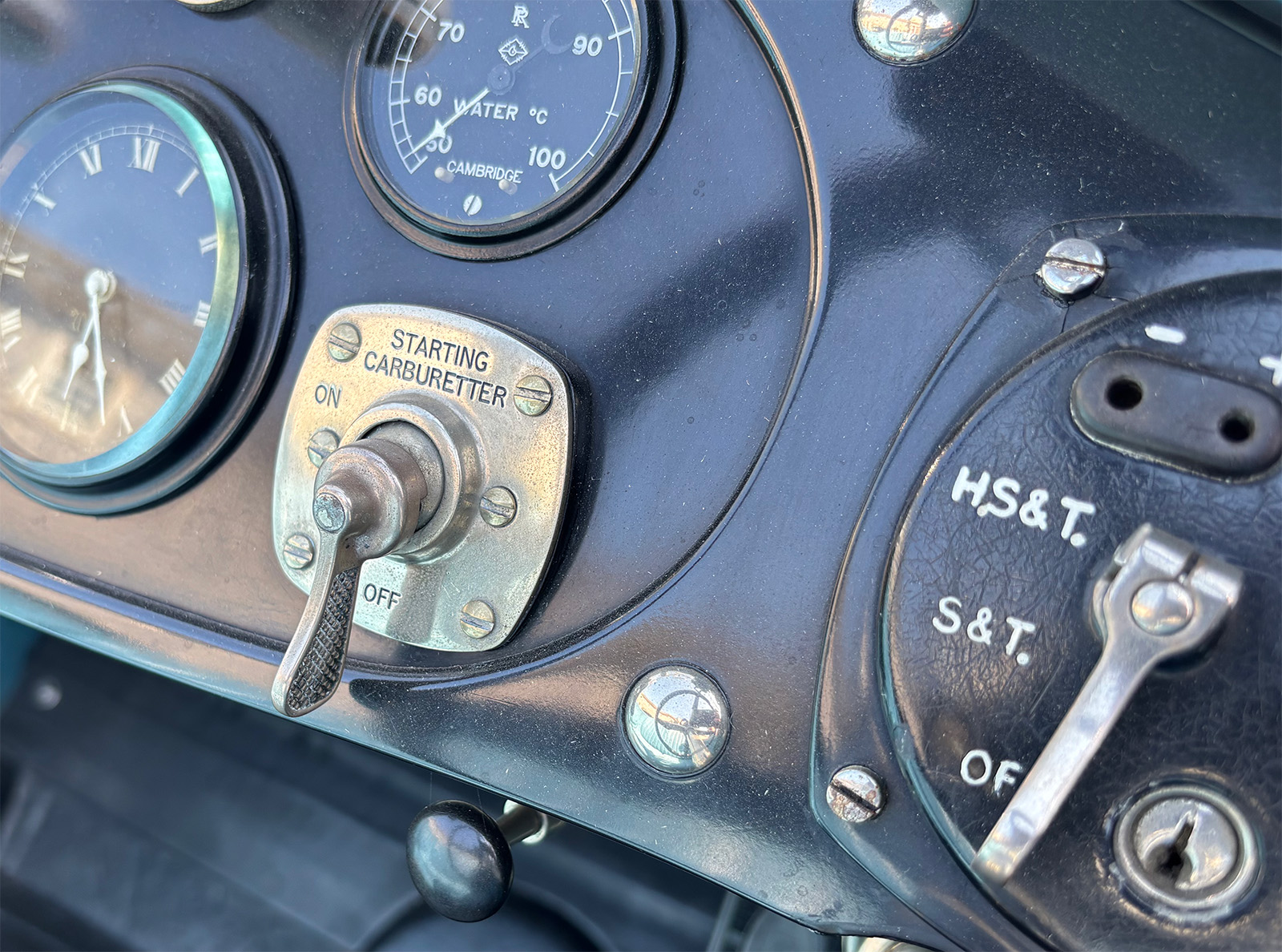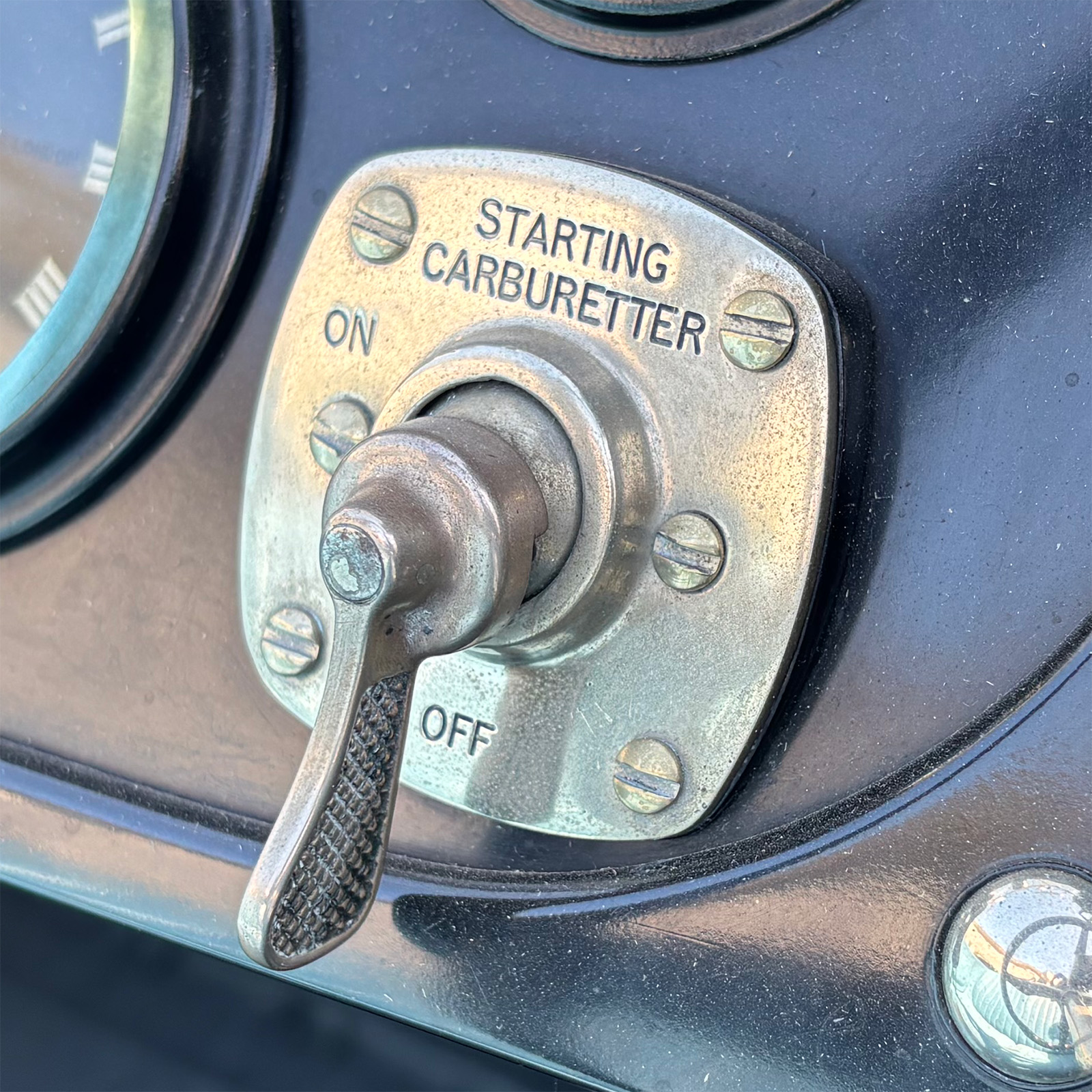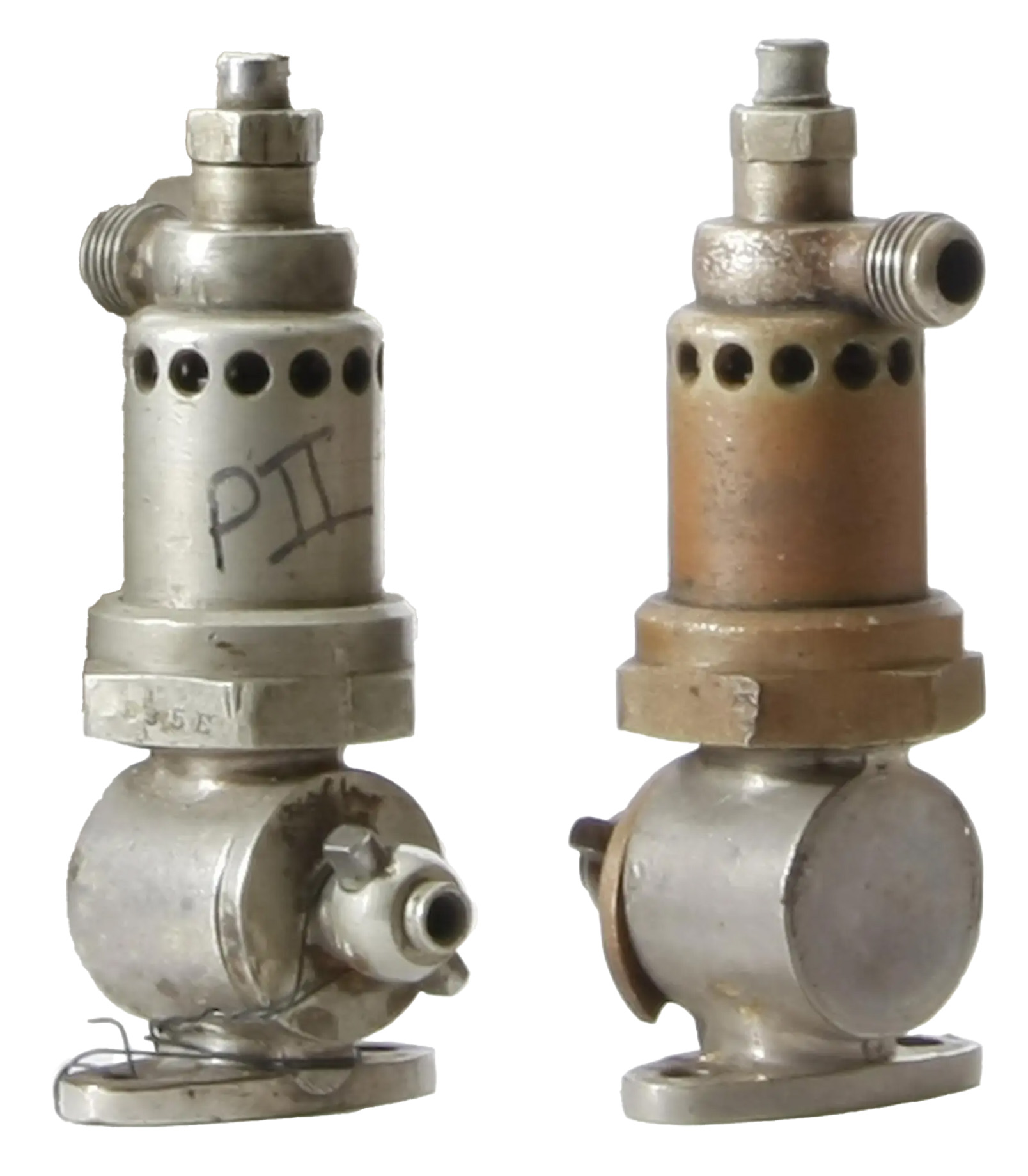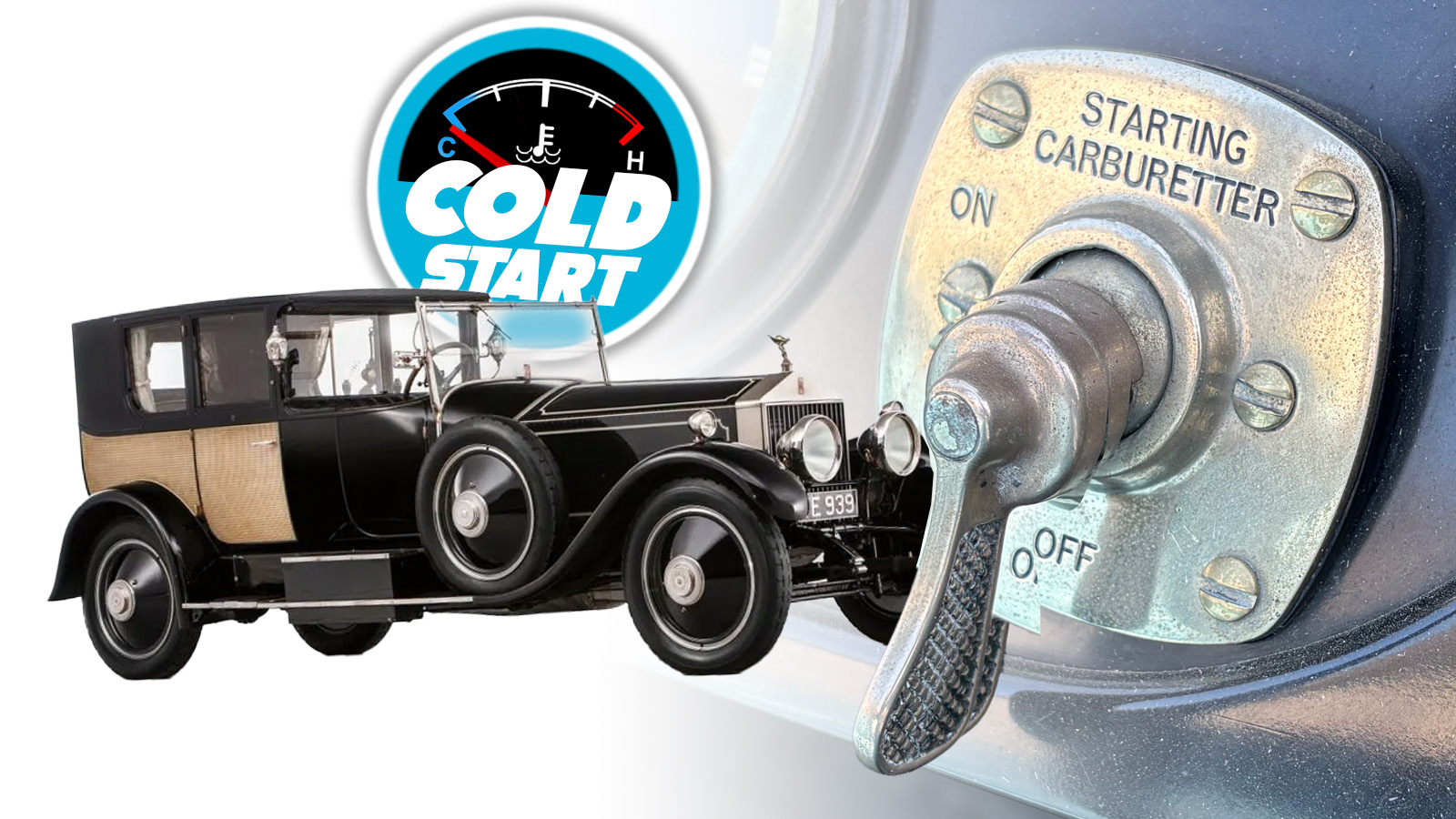I’m still freshly back from Goodwood, and there’s still so much stuff to go through, and, knowing me, I’ll likely forget things or come back to them months later. I’ve accepted that. But at this moment, there’s plenty of things that are still nice and fresh, cutting-edge, breaking news kind of things about car that are barely a century old! Barely!
One particular detail is something I spotted on the dashboard of a Rolls-Royce Phantom, I think a Phantom I from around 1925 or so? This particular control caught my eye because it’s a large, prominent switch that was clearly labeled, and labeled with words that, while familiar, when combined were not something I was familiar with.
Here, this is what I’m talking about:

I’m not talking about the big switch over on the right, which took me a while to figure out just what the hell it was – it’s a light switch! The “S &T” and “H, S & T,” both with their fussy little trailing periods, stand for “side and tail” and “head, side, and tail” respectively, referring to which sets of lights you want to turn on.
That feels a lot more needlessly obtuse than just a little two-step pull knob with an icon of a headlight on it, but hey, this is old and for fancy people who appreciate ampersands and other punctuation.
No, the switch I’m talking about is this one:

“Starting carburetter,” using the British spelling of carburetor with their extra “T’ and lack of “O.” I’ve never really encountered the idea of what seems to be a separate carburetor just for starting a car, though I imagine it’s something like what a choke does on a normal carb setup – providing a more rich fuel-air mixture to get the car started.
That does seem to be what’s going on here – in typical Rolls-Royce overdoing it fashion, a simple choke wasn’t enough, and there’s a whole separate carb just to get things started. This is what the starting carb looks like:

Much simpler than the full downdraft Stromberg carb these things tended to use, but still vastly more complex than just a choke valve on a carb.
From what I can glean from these forum posts, the starting carb may have its own independent fuel lines? I’m not entirely sure, but what I am sure of is that starting one of these old Rolls-Royces is a shockingly complicated enterprise.
Here, check this starting procedure out, on a US-built “Springfield” Phantom 1:
Holy crap. I think I’d just start mine at the beginning of the week and leave it running until the Lord’s Day Of Rest, or something. Here’s another video, showing the use of the starting carb specifically:
This starting carb switch is a spring-loaded one, so you don’t accidentally leave it on, which, according to those forums, is bad, and leads to sootiness, which is an indication of a sooty soul and poor character.
I’m also a little confused about the hand throttle vs the foot throttle, the normal accelerator pedal. Are they the same thing, just the hand one is able to stay at a given setting?
Also, while I love driving a manual car and am fine with a manual choke, I think I’m fine with not having to manually adjust my ignition timing or fuel mixture.
What’s really interesting, I think, is just how complex this all was, especially on a luxury car. Things changed quite rapidly from here, and starting most cars by the 1930s was vastly easier. I’ve driven economy cars from around the same time, like a 1926 Hanomag 2/10, and starting them wasn’t much different than starting a modern car – key, starter, some throttle, and that’s it. That feels much more “luxurious” than the dismantling-a-bomb level of complexity of starting one of these Rollers, but maybe the concept of luxury was different then, and less focused on ease.
Besides, most Rolls owners probably had a chauffeur to do this crap; making it more complex just meant they were getting their money’s worth.









I have a vague recollection from my teenage years of the ’76 VW Microbus we had as a family car having dual carbs, with a third ‘carblet’ mounted in a crossover pipe between the 2 main carbs, as a sort of cold start unit. Not sure if that was a common thing on VW buses at the time – ours was an ex-ambulance and was a 2 litre automatic, which seemed to be relatively uncommon.
My Mazda RX-3 had a fancy choke – you didn’t have to remember to push it back in when the rotary engine warmed up. The friction in the choke cable that held it open was maintained by an electromagnet, which released the choke when a temp sensor (I think in the oil pan?) detected the engine coming up to temperature.
And the light switch in the Fiat Topolino my old boss restored had Off, Parkers, Main and Hill positions – apparently Hill reduced the power of the headlights to conserve engine power for climbing hills! My boss decided that if the engine was so underpowered this was a necessity, it needed hotting up, so he designed a ‘hot’ cam profile for it, ground a special master pattern for it, and I reground the factory cam to a ‘hot’ profile – maybe the only time anyone has done that! (I used to work grinding performance camshafts at a shop that evolved from an engine building shop when the boss developed his own software and hardware to convert manual Italian camshaft lathes to full CNC control!)
It would have been funny if it was spelled CARRBURETER (2 R’s instead of 2 T’s for Rolls Royce)
Hand throttles in conjunction with an accelerator pedal was quite common many years ago, particularly with trucks but also found in many cars. Yes you can set them, a primitive type of cruise control in a way.
Torch didn’t get stuck in Bermuda after all, what a relief
You call that complicated? Ha!
Anyway, this is what I had to deal with as a child, except on a D6 not a D2 – the 2 sure is cute though – and ours always took about 20 pulls and some ether.
https://youtu.be/Ck210eL9qcI?si=xQg8h4g0HNarcOVp
The rods and levers under the RR’s hood that connect all those controls on the steering wheel are quite amazing, and worth a look.
Just wait till you find out there is equipment out there with an entire small engine dedicated to starting the big engine.
The SR-71 Blackbird’s jet engines were started by a pair of Buick nailhead 401 cubic inch V-8 engines, later replaced with Chevy 454’s!
https://www.thesr71blackbird.com/Aircraft/Engines/starting-the-sr-71-blackbirds-j58-engines-ag330-start-cart
I guess I see why EV’s were popular back then.
“To start the engine it’s as easy as tuning a piano!”
Porsche 911s with Weber carbs have a hand throttle. Also 914/6s. Just like a tractor.
It’s because the Weber carbs have no chokes. And yes you can easily go 100mph with your foot off the gas.
My FIAT 500D has a Weber…also has a hand throttle too. Fortunately my FIAT can’t go more than about 50mph. It originally had an IMB 26 (replaced it was an 28) and I always thought it had a choke. When I was rebuilding it, an Italian mechanic called what I always thought was the choke, a starter. It was confusing and never really understood the difference.
On the street the Porsche IDAs at cruising speeds is using the idle circuit, and the accelerator circuit.only at wide open throttle.
Your Fiat may have spent a lot more time in slow car fast mode using the accelerator circuit, so maybe the idle circuit was tuned rich for starting and called the starter circuit.
I don’t know much about Webers other than IDAs
Classic Jags have those! My 72 XJ6 likely had one before someone swapped out the intake to triple SUs.
Yep, my ’68 XJ6 had one!